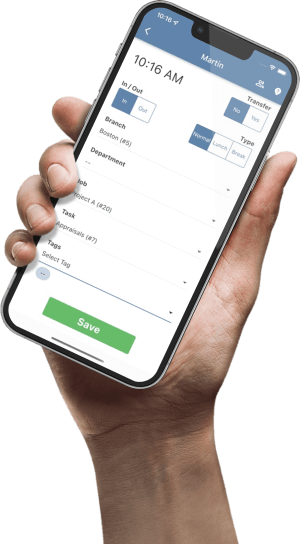California Payroll Calculator

How to Use the California Payroll Calculator
State Confirmation
- Verify that “California” is displayed as the state.
- This ensures all calculations adhere to California’s specific tax laws and regulations.
Federal and State Withholding Information
- Enter the withholding allowances or amounts from your Federal W-4 form and your California DE 4 form.
- Accurate input is crucial as these values determine your federal and California state income tax withholdings, reflecting your personal exemptions, dependents, and any additional withholding.
Pay Frequency Selection
- Choose your pay period from the following options:
- Weekly
- Bi-weekly
- Semi-monthly
- Monthly
- This selection is vital for accurately prorating your annual tax liability across each pay period.
Gross Wage Entry
- Input your total gross earnings for the chosen pay period. This includes your base salary, overtime, bonuses, and any other taxable income.
- Precise gross wage entry is fundamental for accurate tax and deduction calculations.
Pay Date Specification (Optional but Recommended)
- Enter the date of your upcoming pay date. If unsure, refer to a recent pay stub.
- Providing the pay date can help refine certain date-sensitive calculations, if applicable.
Calculation and Results
- Click the “Calculate” button to process your payroll information.
- Review the detailed breakdown of your estimated paycheck:
- Gross Pay: Total earnings before deductions.
- Federal Income Tax: The amount withheld for federal income taxes.
- California State Income Tax: The amount withheld for California state income taxes.
- Social Security Tax (OASDI): The amount withheld for Social Security.
- Medicare Tax: The amount withheld for Medicare.
- Other Deductions: This may include:
- Pre-tax deductions (e.g., 401(k) contributions, health insurance premiums).
- Post-tax deductions (e.g., charitable contributions, other voluntary deductions).
- State Disability Insurance(SDI)
- Net Pay: Your final take-home pay after all deductions and taxes.
Found our California Payroll Calculator useful? Bookmark and share it.

What is a California Payroll Calculator?
A California Payroll Calculator is a digital tool designed to estimate an employee’s net pay (take-home pay) specifically within the state of California. It simplifies the complex process of calculating payroll by automatically factoring in federal and California-specific tax laws, alongside common deductions.
Here's a closer look at its function:
- Accurate Tax Calculations: The calculator accounts for federal income tax, California state income tax, Social Security, Medicare, and California State Disability Insurance (SDI) deductions. These calculations are crucial for compliance and ensuring accurate pay estimates.
- Deduction Management: Beyond mandatory taxes, it can also factor in other common deductions like health insurance premiums, retirement contributions (e.g., 401(k)), and other voluntary deductions.
- Pay Period Flexibility: Typically, these calculators allow users to input their pay frequency (weekly, bi-weekly, semi-monthly, or monthly), enabling accurate prorating of annual taxes across each paycheck.
- User-Friendly Interface: A well-designed California Payroll Calculator provides an intuitive interface, making it easy for both employees and employers to input necessary information and understand the resulting calculations.
Who Benefits from a California Payroll Calculator?
- Employees:
- To estimate their net pay and budget effectively.
- To verify the accuracy of their pay stubs.
- To understand how changes in withholding or deductions impact their take-home pay.
- Employers:
- To estimate payroll costs and plan budgets.
- To ensure accurate tax withholding and compliance.
- To provide employees with transparent payroll information.
California Unemployment Insurance (UI) Tax: Employer Obligations
California’s state income tax system is known for its complexity and progressive nature, reflecting the state’s approach to tax equity and fiscal policy. This system requires individuals, estates, and trusts earning income within the state to pay taxes according to a set of graduated rates. These rates increase as the taxpayer’s income increases, meaning higher earners pay a larger percentage of their income in taxes compared to lower earners. Here’s a detailed overview of California’s state income tax requirements and the progressive tax rates for the current tax year.
Key Aspects of California UI Tax:
- Employer Contributions:
- Most California employers are “tax-rated,” meaning their UI tax liability is determined by an assigned UI rate.
- Certain employers, such as non-profit organizations and public entities, may utilize the “Reimbursable Method,” where they reimburse the UI fund for actual benefits paid to their former employees.
- UI Rate Schedule:
- For 2025, the UI rate schedule is set at Schedule F+.
- Experienced employers face contribution rates ranging from 1.5% to 6.2%.
- Schedule F+ includes a 15% emergency surcharge added to the base Schedule F rate, reflecting a potential need to strengthen the UI fund.
- Taxable Wage Limit:
- The taxable wage limit for UI in 2025 is $7,000 per employee per calendar year.
- This means employers only pay UI tax on the first $7,000 of each employee’s annual earnings.
- New Employer Rate:
- New employers in California are assigned an initial UI tax rate of 3.4%.
- This introductory rate applies for two to three years, providing a consistent starting point before an individual experience rating is established.


California Employment Training Tax (ETT): Investing in Workforce Development
California employers contribute to more than just unemployment insurance. They also fund the Employment Training Tax (ETT), a crucial component of the state’s workforce development strategy.
Key Aspects of the ETT:
- Purpose:
- The ETT directly funds job training programs throughout California.
- This investment aims to boost the competitiveness of California businesses by ensuring a highly skilled workforce.
- Rate Determination:
- An employer’s specific ETT rate is linked to the balance of their Unemployment Insurance (UI) reserve account.
- 2025 Rate:
- For the year 2025, the ETT rate is set at 0.1%.
- This relatively low rate indicates a comparatively small financial contribution required from employers.
- Taxable Wage Limit:
- The taxable wage limit for ETT in 2025 is $7,000 per employee per calendar year.
- This aligns with the UI tax taxable wage limit, streamlining the calculation process for employers.
California State Disability Insurance (SDI): Protecting Workers and Families
California’s State Disability Insurance (SDI) program provides vital financial support to workers facing non-work-related disabilities or family care needs. It’s funded through mandatory payroll deductions from employee wages.
Key Features of California SDI:
- Employee-Funded:
- SDI is funded entirely through employee payroll deductions.
- Coverage:
- Provides temporary benefit payments to workers unable to work due to:
- Non-work-related illness or injury.
- Pregnancy.
- Also funds California’s Paid Family Leave (PFL) program.
- Provides temporary benefit payments to workers unable to work due to:
- 2025 Withholding Rate:
- The SDI withholding rate for employees in 2025 is 1.2%.
- Elimination of Taxable Wage Limit:
- Effective January 1, 2024, the taxable wage limit for SDI has been removed.
- All wages are now subject to SDI contributions.
- Paid Family Leave (PFL):
- SDI contributions directly fund PFL benefits.
- PFL provides financial support for employees taking time off to:
- Bond with a new child.
- Care for a seriously ill family member.
- Increased Benefit Levels:
- In 2025, benefit levels for both SDI and PFL have increased.
- Lower-income earners can now receive up to 90% of their regular wages.
- Maximum Weekly Benefit:
- The maximum weekly benefit amount for SDI and PFL claims beginning in 2025 is $1,681.
- Significant Impact:
- The elimination of the taxable wage limit and increased benefits enhance financial support for California workers.
- This ensures that all wage earners contribute to and benefit from the program.

California Personal Income Tax (PIT) Withholding: Employer Responsibilities
California employers are legally required to withhold state Personal Income Tax (PIT) from their employees’ wages. This process involves several crucial steps and considerations.
Key Aspects of California PIT Withholding
- Employer Obligation:
- Employers must withhold PIT from employee wages.
- Factors Determining Withholding:
- Amount of wages paid.
- Number of withholding allowances claimed on Form DE 4.
- Employee’s payroll period.
- Required Forms:
- Employees must complete and sign both federal Form W-4 and California’s Form DE 4 upon hiring.
- If an employee fails to provide a completed DE 4, the employer must withhold as if the employee were single with zero allowances.
- Withholding Calculation Methods:
- Method A (Wage Bracket Table Method):
- A simplified approach using pre-defined wage bracket tables.
- Considers payroll period, filing status, and withholding allowances.
- Includes tables for low-income exemptions and additional withholding.
- Method B (Exact Calculation Method):
- A more precise method using tax rate tables and subtracting tax credits.
- Involves calculating taxable income, applying tax rates, and subtracting credits.
- Method A (Wage Bracket Table Method):
- Form DE 4 Importance:
- The Employee’s Withholding Allowance Certificate (DE 4) is the primary form for California PIT withholding.
- Since 2020, the federal W-4 no longer includes allowances, making DE 4 essential.
- Employees can claim additional allowances for estimated deductions on DE 4.
- Employers can require an employee to file a DE 4 when they utilize additional allowances.
- Employer Choice:
- Employers can choose the withholding method (Method A or B) that best suits their needs.
- Compliance:
- Using the correct forms, especially the DE 4, is crucial for accurate California PIT withholding.
Employee and Independent Contractor Reporting Requirements in California
California mandates specific reporting obligations for employers and businesses regarding their employees and independent contractors, primarily managed by the Employment Development Department (EDD).
New Employee Registry (NER) Reporting:
- Legal Obligation:
- Employers must report all newly hired or rehired employees working in California to the NER.
- Reporting Timeline:
- Within 20 calendar days of the employee’s start-of-work date (first day services were performed for wages).
- A rehire is defined as a returning employee separated for at least 60 consecutive days.
- Reporting Methods:
- Electronic reporting via EDD’s E-Services for Business portal (two monthly reports, 12-16 days apart).
- Paper reporting using Form DE 34 (mail or fax).
- Copy of federal Form W-4 and/or state Form DE 4 (with additional required information).
- Required Information:
- Employer: EDD payroll tax account number, FEIN, business name and address, contact person details.
- Employee: First name, middle initial, last name, SSN, home address, start-of-work date.
- Penalties for Non-Compliance:
- $24 per unreported employee.
- $490 per employee for intentional or falsified reports.
Independent Contractor Reporting:
- Applicability:
- Businesses and government entities (“service-recipients”) required to file federal Form 1099-NEC or 1099-MISC.
- Applies to payments of $600 or more to individuals or sole proprietorships (“service-providers”).
- Reporting Form:
- Form DE 542, Report of Independent Contractor(s).
- Required Information:
- Service-recipient and service-provider details.
- Contract details: start date, amount (if applicable), expiration date (or ongoing status).
- Reporting Deadline:
- Within 20 days of payments totaling $600 or more, or entering into a $600+ contract, whichever occurs first.
- Electronic filers must submit two monthly reports.
- Penalties for Non-Compliance:
- $24 per unreported contractor.
- $490 per contractor for intentional or falsified reports.

Disclaimer: The content provided on this webpage is for informational purposes only and is not intended to be a substitute for professional advice. While we strive to ensure the accuracy and timeliness of the information presented here, the details may change over time or vary in different jurisdictions. Therefore, we do not guarantee the completeness, reliability, or absolute accuracy of this information. The information on this page should not be used as a basis for making legal, financial, or any other key decisions. We strongly advise consulting with a qualified professional or expert in the relevant field for specific advice, guidance, or services. By using this webpage, you acknowledge that the information is offered “as is” and that we are not liable for any errors, omissions, or inaccuracies in the content, nor for any actions taken based on the information provided. We shall not be held liable for any direct, indirect, incidental, consequential, or punitive damages arising out of your access to, use of, or reliance on any content on this page.
Trusted By
Trusted by 3.2M+ Employees: 21 Years of Service Across Startups to Fortune 500 Enterprises
Join our ever-growing community of satisfied customers today and experience the unparalleled benefits of TimeTrex.










Strength In Numbers
Join The Companies Already Benefiting From TimeTrex
Time To Clock-In
Start your 30-day free trial!
Experience the Ultimate Workforce Solution and Revolutionize Your Business Today
- Eliminate Errors
- Simple & Easy To Use
- Real-time Reporting

Saving businesses time and money through better workforce management since 2003.
Copyright © 2025 TimeTrex. All Rights Reserved.

